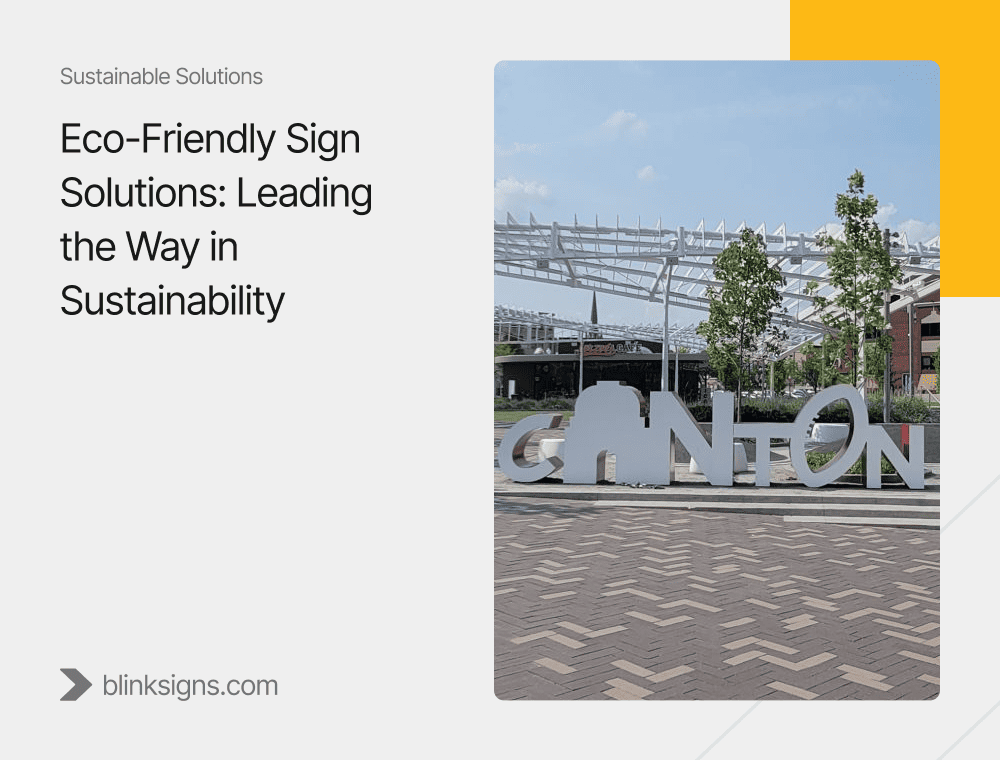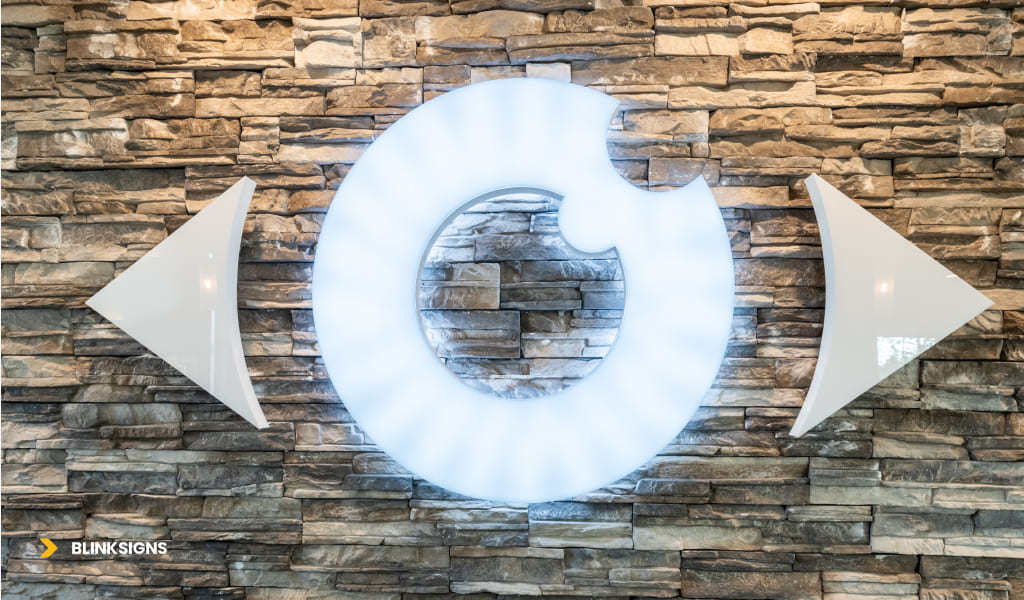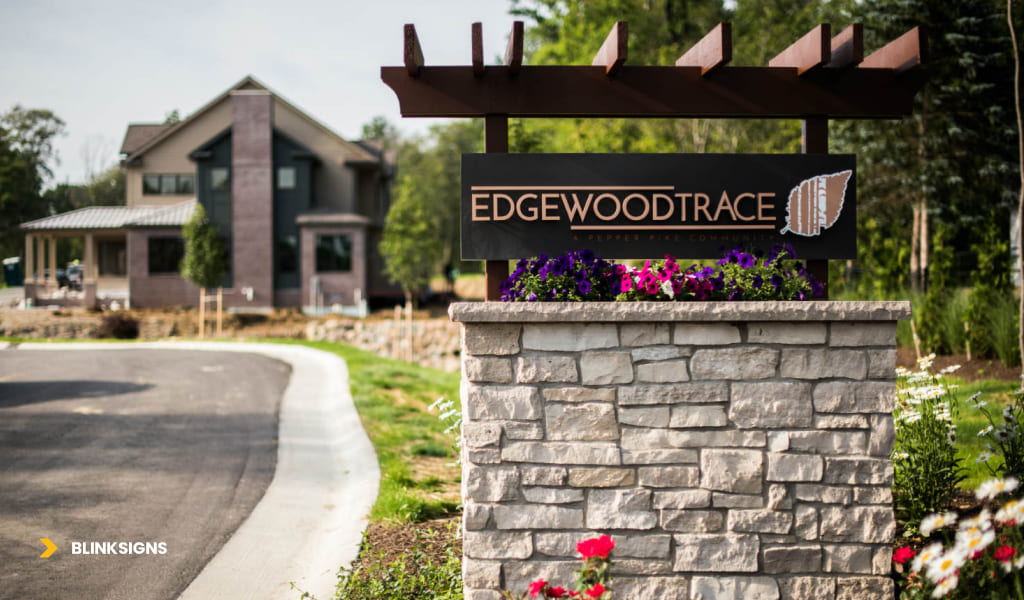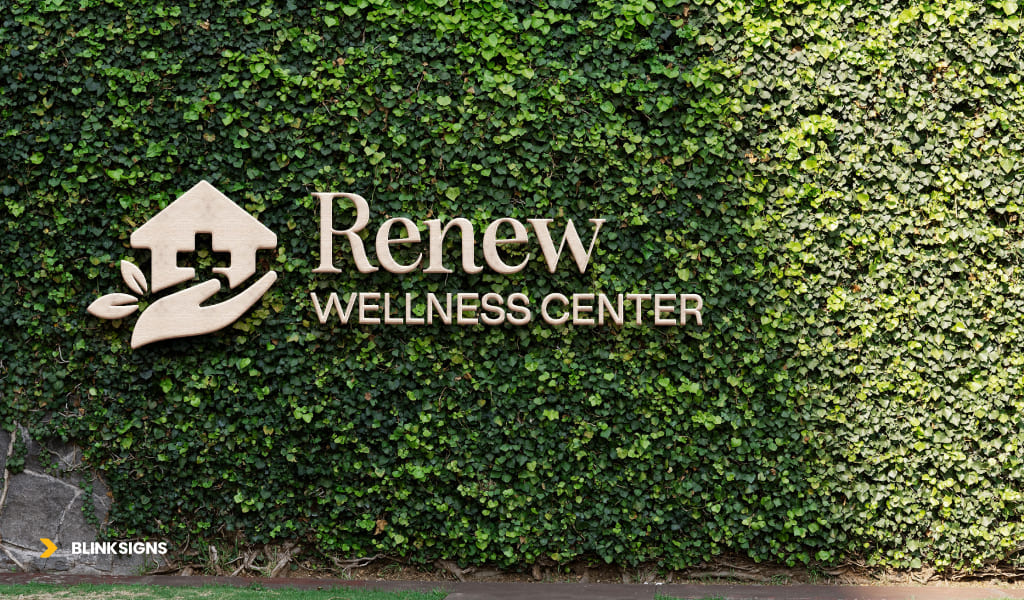
Eco-Friendly Signage Solutions: Leading the Way in Sustainability
Sustainability has evolved from a trendy term to a global necessity, and companies of all sizes are significantly implementing environmentally responsible practices. This shift has led to innovative signage solutions that improve brand identity and reduce environmental impact.
Eco-friendly signage demonstrates a company’s commitment to the planet and attracts environmentally conscious clients and consumers.
BlinkSigns is a leader in sustainable signage, offering advanced solutions tailored to meet modern business demands. This article explores the importance of eco-friendly signage, the materials and technologies shaping its future, and how BlinkSigns drives sustainability in the signage industry.
The Importance of Sustainability in Modern Signage

The Importance of Sustainability in Modern Signage
The signage industry traditionally relies on materials and processes that can negatively impact the environment. The cumulative ecological footprint has been substantial, from non-recyclable plastics to energy-intensive lighting systems. According to the EPA, the signage industry annually contributes approximately 10% of plastic waste to landfills.
Today, businesses face increasing pressure from consumers, stakeholders, and regulatory bodies to adopt sustainable practices.
Eco-friendly signage addresses these concerns by reducing waste, conserving energy, and supporting broader environmental goals. Moreover, sustainable signage helps businesses enhance their brand reputation, as customers are more likely to support companies that demonstrate environmental responsibility. In this context, sustainable signage is not just a trend but a necessity.
Eco-Friendly Materials Transforming Signage

Eco-Friendly Materials Transforming Signage
The shift toward sustainability has driven the adoption of innovative materials in signage production. Recycled plastics, for example, offer durability and versatility while significantly reducing landfill contributions. Similarly, biodegradable options like bamboo and organic composites provide renewable alternatives that align with green business practices.
Sustainable metals, including recycled aluminium, are gaining traction for longevity and eco-friendly sourcing. Furthermore, low-VOC (volatile organic compounds) inks and water-based adhesives have revolutionized printing by minimizing harmful emissions and ensuring safer production environments.
Eco-Friendly Materials and Their Benefits
| Material Type | Features | Benefits |
| Recycled Plastics | Durable, versatile | Reduces landfill waste |
| Bamboo | Biodegradable, fast-growing | Renewable and eco-friendly |
| Recycled Aluminum | Lightweight, corrosion-resistant | Sustainable and long-lasting |
| Low-VOC Inks | Non-toxic, water-based | Safer for production and the environment |
Energy-Efficient Signage Solutions

Energy-Efficient Signage Solutions
Modern businesses increasingly use energy-efficient lighting systems to reduce power consumption and operational costs. LED lighting has emerged as the gold standard, offering superior brightness and longevity with minimal energy usage. A report by the Department of Energy found that LED lights use up to 80% less energy than traditional incandescent bulbs, resulting in significant cost savings for businesses.
Solar-powered signage takes this one step further by harnessing renewable energy to operate.
Additionally, digital signage now incorporates energy-saving features such as motion sensors, which activate displays only when needed, and auto-dimming technology that adjusts brightness based on ambient light. These advancements align with sustainability goals and deliver significant long-term savings for businesses.
Business Benefits of Sustainable Signage

Business Benefits of Sustainable Signage
Investing in eco-friendly signage offers numerous advantages beyond environmental conservation. For one, it enhances a business’s brand image, showcasing a commitment to corporate social responsibility. This appeal to eco-conscious consumers fosters customer loyalty and attracts new clientele.
Additionally, sustainable signage often saves costs over time due to reduced energy consumption and lower maintenance needs.
Adopting sustainable practices is crucial for companies aiming to lead their industry. It ensures compliance with regulations and positions them ahead of market trends, establishing them as benchmarks for success.
How to Transition to Eco-Friendly Signage

How to Transition to Eco-Friendly Signage
Transitioning to sustainable signage begins with a comprehensive audit of existing systems to identify areas for improvement. BlinkSigns offers expert guidance in selecting materials and designs that align with regulatory standards and brand identity.
Businesses can implement phased upgrades to minimize disruption and balance costs while ensuring that new signage integrates seamlessly with existing aesthetics.
Additionally, staying informed about advancements in eco-friendly technologies helps businesses make proactive decisions to maintain compliance and stay ahead of competitors.
Highlighting Global Trends in Eco-Friendly Signage

Highlighting Global Trends in Eco-Friendly Signage
Sustainability in signage is a global movement, with regions like Europe and Asia leading in adopting green technologies. Innovations such as bioplastics, moss walls, and IoT-integrated smart signage are gaining popularity.
- Bioplastics: Companies like Plantic Technologies are developing bio-based plastics derived from corn starch, offering a compostable alternative to traditional plastics.
- Moss Walls: Sagegreenlife specializes in creating living moss wall installations that can be incorporated into signage designs, bringing a touch of nature indoors.
- IoT-Integrated Smart Signage: Companies like Broadsign are developing platforms that allow businesses to manage and update their digital signage remotely, optimize energy consumption, and track performance data.
These trends shape the industry’s future, emphasizing circular economy principles and encouraging businesses to adopt more sustainable practices.
BlinkSigns leverages these global insights to offer its clients cutting-edge solutions that meet international standards.
BlinkSigns’ Eco-Friendly Practices
BlinkSigns has set the benchmark for sustainability in the signage industry by adopting eco-friendly production processes and materials. The company employs precision cutting and optimized material usage to minimize waste. Renewable energy sources are integrated into its manufacturing facilities, reducing its carbon footprint.
BlinkSigns also emphasizes eco-friendly logistics, utilizing reduced packaging and carbon-neutral shipping methods. Through these initiatives, BlinkSigns ensures that every step of the production process aligns with its commitment to sustainability.
Here are some specific examples of BlinkSigns’ eco-friendly practices:
- Material Choices: BlinkSigns prioritizes using recycled aluminum and plastics, FSC-certified wood, and bamboo in its signage products.
- LED Lighting: All illuminated signs are equipped with energy-efficient LED lighting, significantly reducing energy consumption compared to traditional lighting options.
- Sustainable Printing: BlinkSigns uses water-based inks and low-VOC solvents in its printing processes, minimizing harmful emissions.
- Waste Reduction: The company implements a robust recycling program and utilizes lean manufacturing principles to minimize waste generation.
Conclusion
Eco-friendly signage is more than a solution for environmental challenges; it is a pathway to improved business performance and enhanced customer relationships. BlinkSigns’ dedication to sustainable practices positions it as a trusted partner for businesses looking to adopt greener strategies.
Businesses can build loyal customers by prioritizing sustainability and reducing their ecological impact.
Contact BlinkSigns today to explore how eco-friendly signage can transform your business and contribute to a more sustainable future.